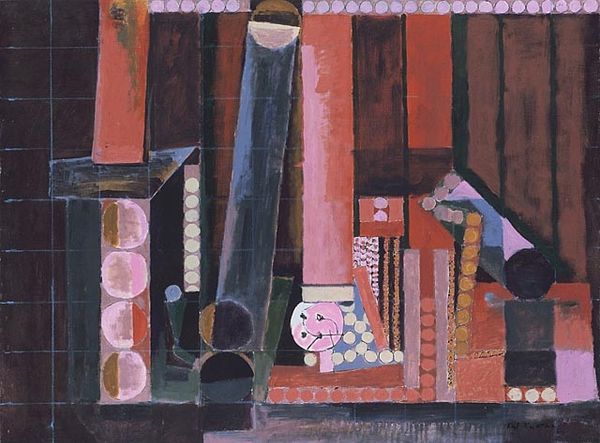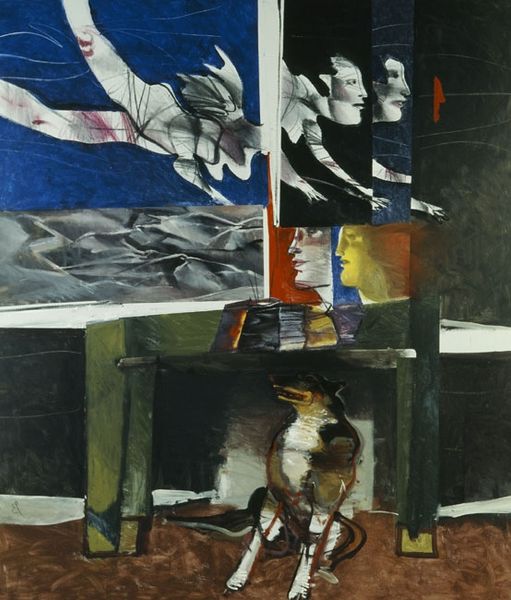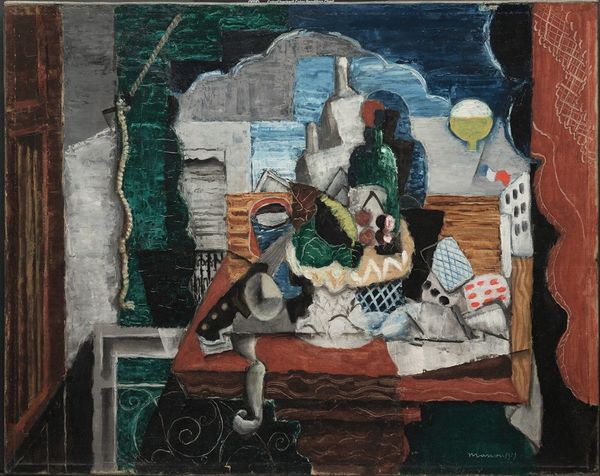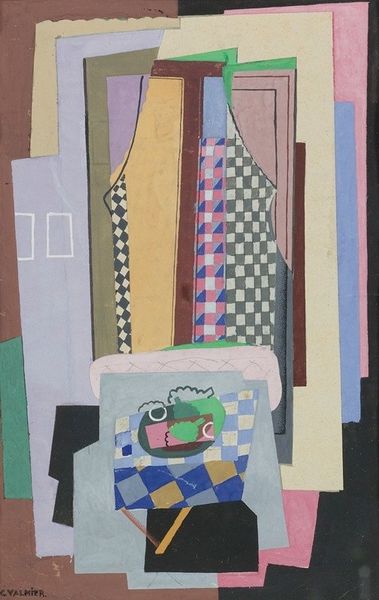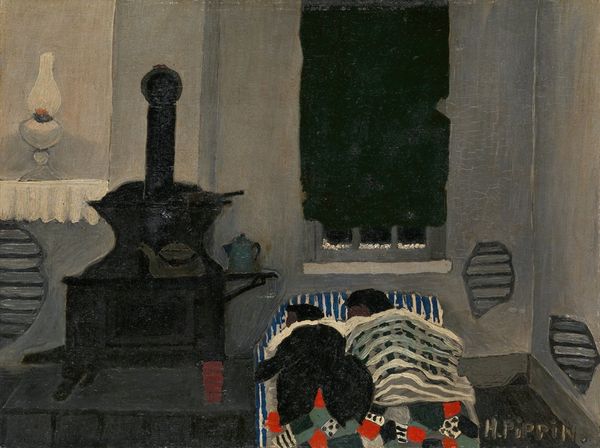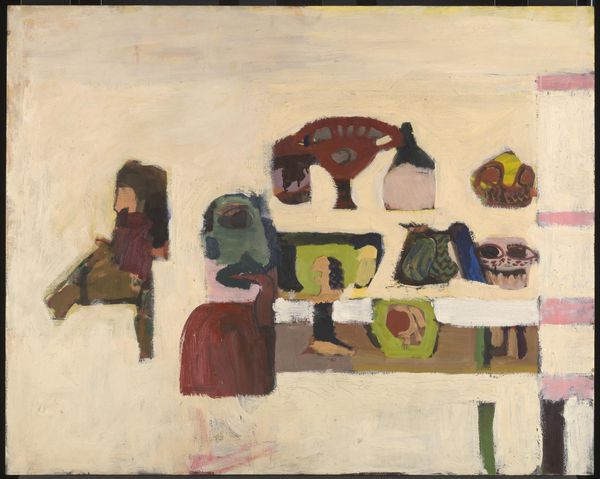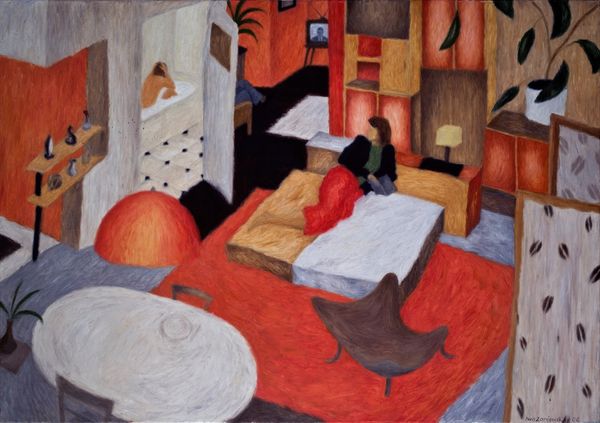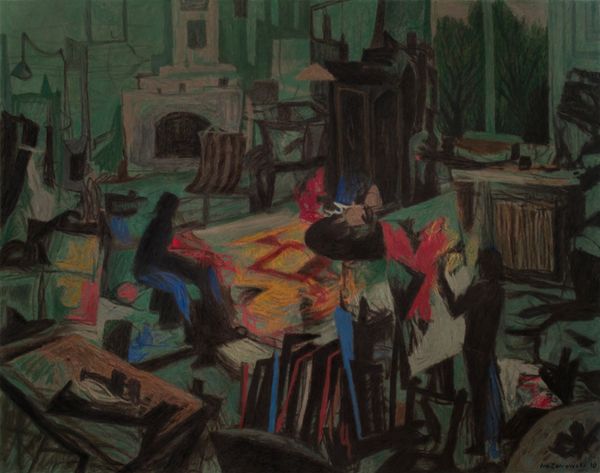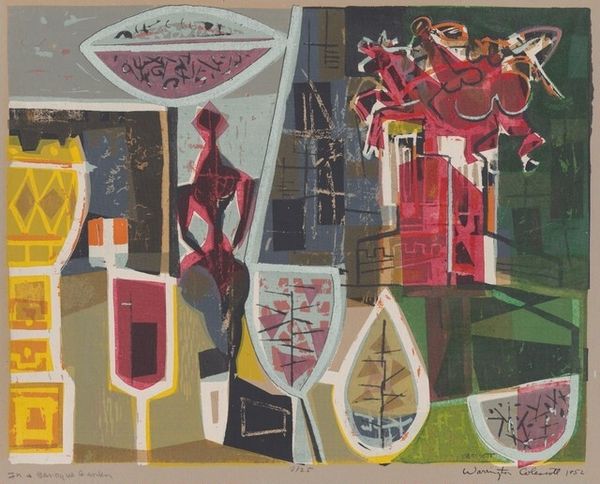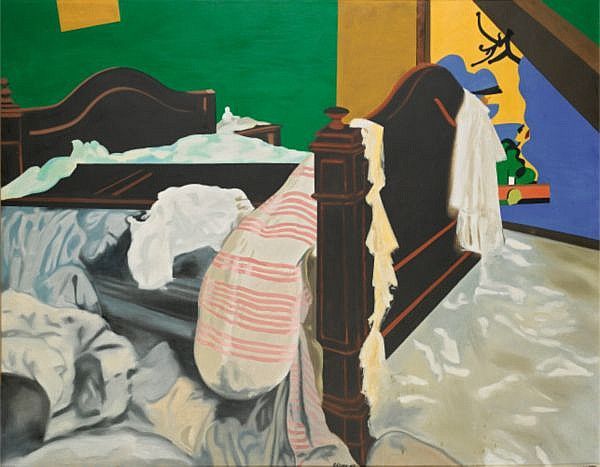
tempera, painting
#
tempera
#
painting
#
figuration
#
social-realism
#
naive art
#
genre-painting
Copyright: Public domain
Curator: This is "Interior" by Horace Pippin, a tempera on canvas painting from 1944. What’s your initial take? Editor: There’s an immediate rawness in the surface texture that captures the feeling of sparse living conditions. It appears like a humble abode with strong material grounding through wood floors and woven textiles. Curator: Pippin’s works often reflect his own lived experiences and the social realities of the African American community. The bareness you noticed emphasizes the economic hardships prevalent during that time, shaped by racist policy and lack of social programs. Editor: Absolutely, look at the central stove. It would have been a pivotal tool in daily life: source of heat, cooking, and gathering around for warmth. It’s clear that process—cooking, eating, warmth—is deeply ingrained into its placement as the interior's focal point. Curator: Right, and its dark, imposing presence is juxtaposed against the seated woman. One can imagine this is the matriarch. Observe how Pippin challenges typical power dynamics by positioning the woman and the stove—essential to labor and family stability—as strong compositional forces. Editor: The materiality of those braided rugs laid all around too, would have had strong resonance at the time; often handcrafted and layered as a method of domestic up-cycling to soften stark homes. The visual effect creates a feeling of abundance through creative re-use. Curator: Note that the composition intentionally flattens perspective. There is an openness, inviting the viewer into a personal, almost sacred space, and implicating them in its everyday rituals. It invites dialogue around agency and shared vulnerability within segregated America. Editor: Yet I read resilience, too. Consider how those crafted textiles contribute not only practically but also as a potent form of cultural expression. The act of making within difficult social circumstances shows us much about this era. Curator: This is precisely why I appreciate this painting. It allows us to unpack intersecting themes of resilience and oppression, but also recognize that this reality doesn’t represent the entire narrative of Black experiences. Editor: It’s the subtle details within simple interiors like these that unlock richer insights, grounding us with respect for craft traditions that remain strong indicators of socio-economic structures.
Comments
No comments
Be the first to comment and join the conversation on the ultimate creative platform.
